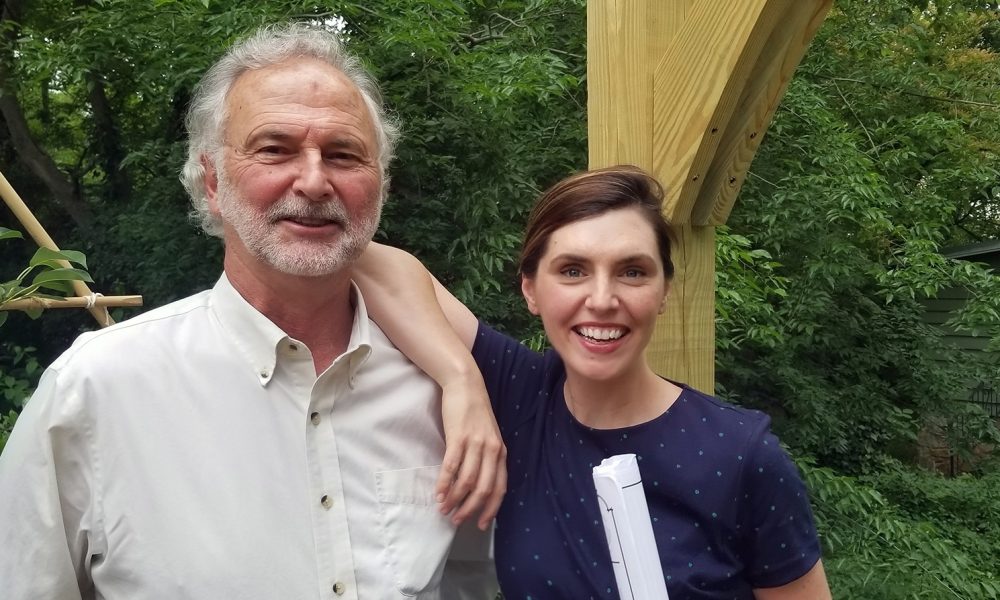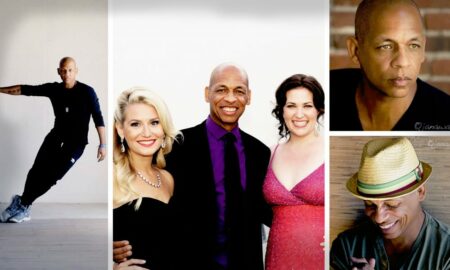

Today we’d like to introduce you to Richard Stevens.
Richard, can you briefly walk us through your story – how you started and how you got to where you are today.
I had always been interested in architecture and construction as a kid, and about seven years after high school, I finally enrolled in Georgia Tech and got my bachelor’s degree and the Master of Architecture in the mid-eighties. I went to work for a multi-national engineering and architecture firm, doing planning and design for large-scale corporate and industrial projects all around North America. That job was really kind of a sellout because it wasn’t the type of work that I had wanted to do, but it was convenient and it paid well. We lived in Decatur, about a half-mile from my office overlooking the courthouse square, and it was a pretty nice setup. But my preference had always been residential design.
A few years and two kids later, we needed something larger than our 1940’s post-war Decatur house, so rather than move I designed an addition. That led to designing additions for neighbors’ houses, then to additions and new houses for friends of neighbors, and it eventually reached a point where I had a steady workload of residential work and was essentially working two jobs. In the early 2000’s, I decided to leave my company and focus on residential work. It was a little scary because my kids were just beginning college, but it worked out well.
Overall, has it been relatively smooth? If not, what were some of the struggles along the way?
Truth is, it was a surprisingly smooth road, or at least more so that I ever expected. The downside of specializing in residential work is that there’s not a repetitive client base upon which you can establish a business. We’ve had several repeat clients over the years — clients deciding to build larger (or smaller) houses or a vacation home, or deciding to proceed with yet another addition — but we’re not doing retail stores or restaurants over and over for any single, established client.
But that never turned out to be an issue, and we have always run a several-month backlog with residential work. Even when the housing market tanked in 2009 – albeit the workload was noticeably lighter at that time and the phone didn’t ring nearly as often — the projects were still there.
I had sort of stumbled into a niche that was recession proof. In a good economy, people build new houses, or they buy a house and they want to make modifications. In a down economy, people stay where they are, but they will still find a way to remodel/expand if they need the space.
Richard M. Stevens Architect, LLC – what should we know? What do you guys do best? What sets you apart from the competition?
My firm is devoted strictly to residential design, primarily on smaller, in-town lots, but we do the occasional new lake house or mountain house. Our in-town work is about ten percent new homes and about ninety percent additions and/or remodels. The additions and remodels are all sizes, from porch additions and outdoor living spaces, kitchen remodels, etc., to major rebuilds and second story additions.
With our focus on in-town work, we provide a full range of services, beyond just design, that is inherent with these types of projects. Urban density and tighter neighborhoods mean that, whatever you may do with your house, there will be at least some impact on the overall character of the neighborhood and on the neighboring property values. This understandably necessitates tighter zoning regulations, and there are generally more stringent constraints regarding environmental impact, stormwater runoff, etc. Our projects are often in historic districts or there are architectural review boards in place.
And, within the Atlanta perimeter, there are ten or fifteen different municipal jurisdictions, all of which have different regulations. Our clients have their own lives and professions, and the regulatory environment can seem intimidating. We explain all of the issues when we first meet with a potential client to discuss their project, and then we assist them throughout the entire process. Our services often include preliminary meetings with local zoning and building officials, architectural review board/historic commission applications and presentations, applying for and processing variances, etc.
It’s very satisfying though, after negotiating through the design and approval processes, developing construction drawings, and working with our clients through the bidding and construction phase, to see everything eventually come to fruition in the form of a new or remodeled house. Probably the greatest thing about the type of work that we do starts with the fact that people have placed their trust in us to affect their everyday lives. It’s really quite a responsibility.
Most of us have fond memories about certain features of the houses that we grew up in, or of our grandparents’ houses or of the houses where we raised our children. These memories may not be so much about significant architectural features as they are about the simple nuance and character of the house. We’re not just designing houses that are conducive to our clients’ needs and lifestyles. We’re creating the spaces from which and in which those memories are formed, ultimately having a big impact on peoples’ day to day lives.
It’s always great to stand back and look at a newly completed project from an aesthetic standpoint, to know that we’ve designed a sustainable, environmentally-responsible structure to meet our client’s program needs, all while preserving and enhancing the scale and the character of the surrounding neighborhood. But it’s something else to have our clients tell us that our design has made such a difference in the quality of their everyday lives.
As far as what I am most proud of … well, that’s a good question. I’m proud of my past projects, and of the reputation that I have built. I’m proud to have so many happy clients and to have won several design awards. But now my daughter has pursued an architectural career — she attended Georgia Tech as well — and we are working together.
As a little girl, she would sit on the floor in my office, drawing pictures or coloring while I worked, and we’ve gone from that to collaborating on designs. It’s pretty special … plus she’s much more talented at this stage of her career than I ever was.
What is “success” or “successful” for you?
Success simply amounts to one’s overall degree of happiness and contentment with their life. A large part of that comes from being able to make a comfortable living doing the type of work that one really likes to do, but while not having to compromise personal standards in order to make it all work. If your standards are high, and you can still do that, and you have a positive impact on the lives of others while doing so, then you’re successful.
In the context of my business, our markers for success are projects that we are proud of, and happy clients. Other than having a website out there, we really don’t do any marketing. Most all of our business comes through referrals from past clients, so our ongoing and upcoming projects are the best indicators of our success.
Contact Info:
- Address: 359 Coventry Road Decatur, Georgia 30030
- Website: www.rmsarchitect.com
- Phone: 404 377 1499
- Email: richard@rmsarchitect.com






Getting in touch: VoyageATL is built on recommendations from the community; it’s how we uncover hidden gems, so if you know someone who deserves recognition please let us know here.



















